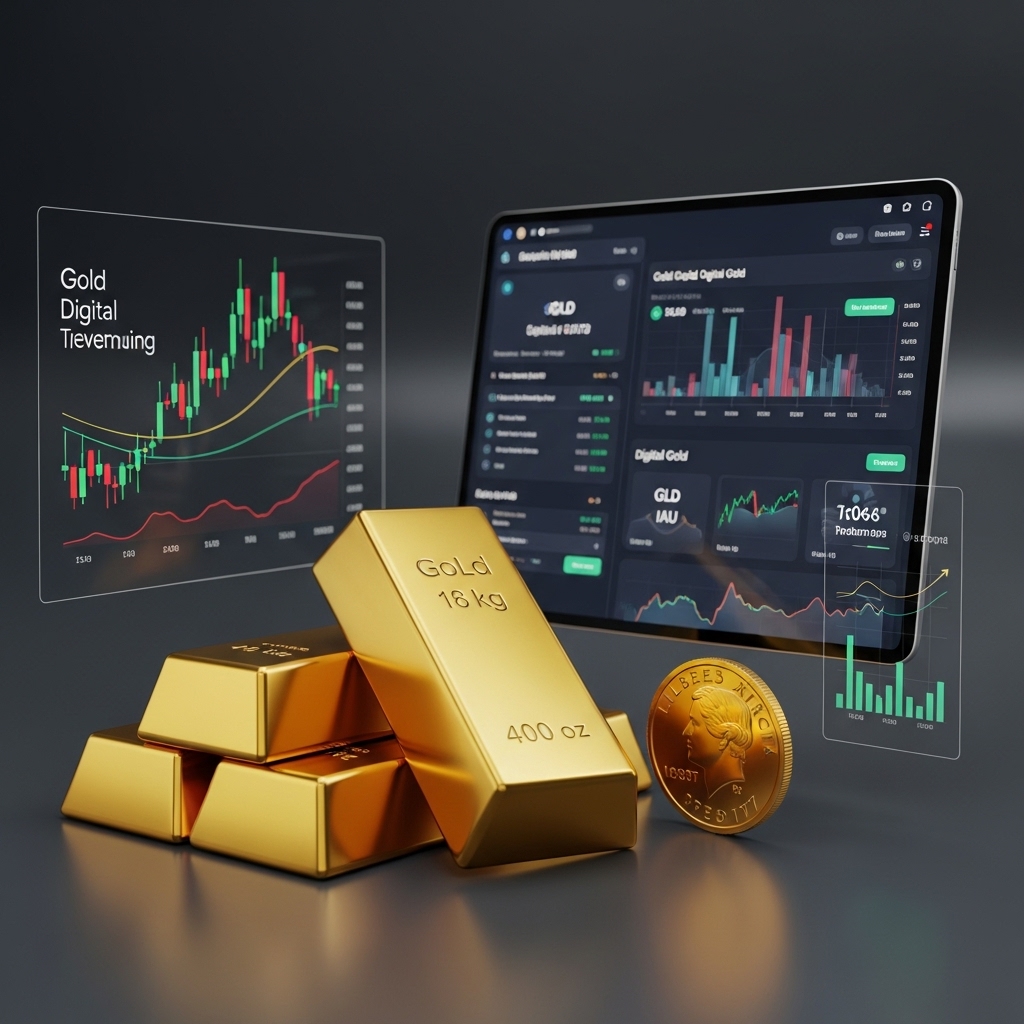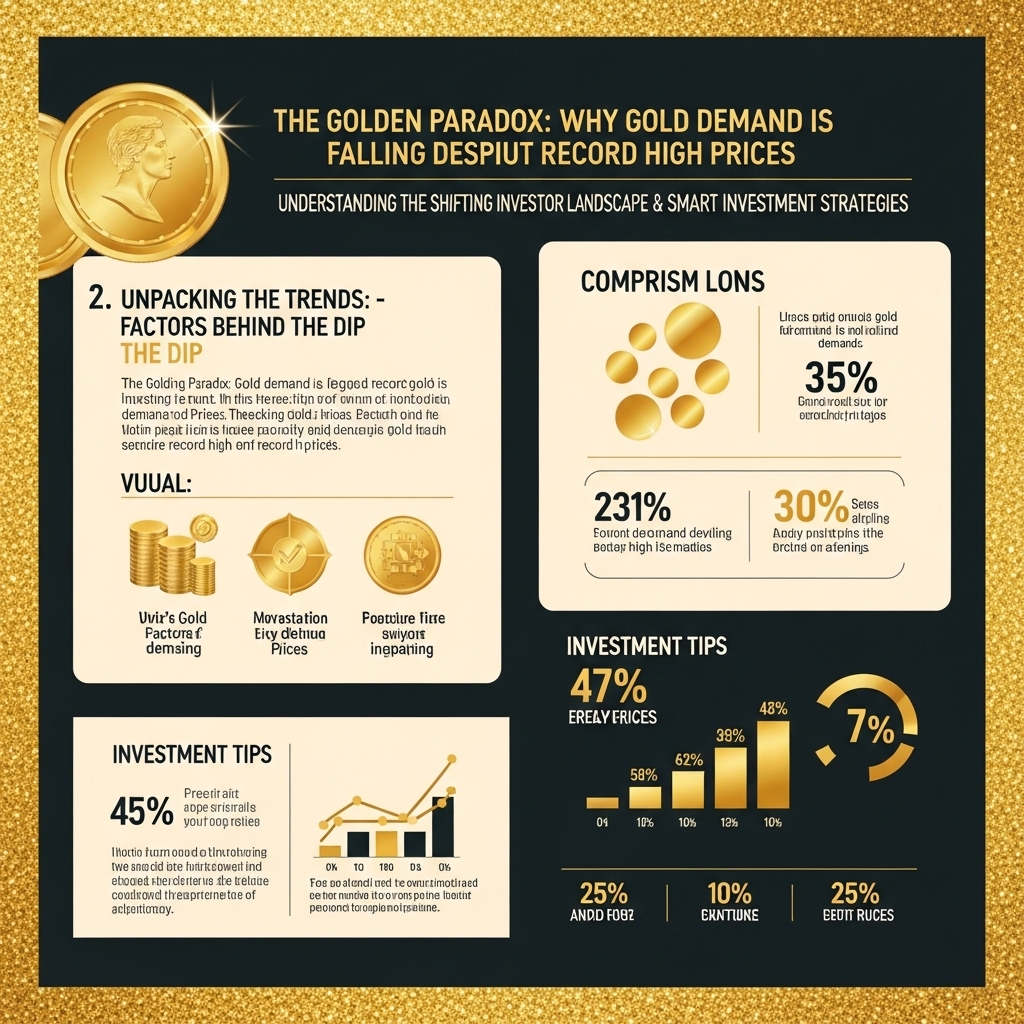Why Gold Demand Is Falling Despite Record High Prices: Unpacking the Paradox for Investors
Gold, the ultimate safe-haven asset, has recently captivated the financial world by soaring to unprecedented record highs. For many investors, this might seem like a straightforward sign of robust health and burgeoning demand for the yellow metal. However, beneath the gleaming surface lies a curious and counter-intuitive paradox: despite these stratospheric prices, global demand for physical gold appears to be notably declining. This disconnect presents a perplexing question for astute gold investors: Why is the lust for gold diminishing even as its price charts new territories, and what does this mean for your portfolio?
This post will delve deep into this intriguing golden paradox, exploring the complex confluence of factors contributing to the observed drop in demand amidst surging prices. We’ll unpack the underlying market dynamics, from evolving central bank policies and the strength of the U.S. dollar to the rise of alternative investment avenues and shifts in consumer and industrial demand across key regions. Understanding why demand is falling despite gold’s record-breaking performance is paramount for anyone looking to optimize their gold holdings and navigate the current market with informed precision.
For gold investors, grasping these subtle yet significant market trends isn’t just academic; it’s crucial for making strategic decisions that impact your financial benefits and portfolio resilience. By shedding light on these intricate dynamics, we aim to equip you with the insights necessary to re-evaluate your gold investment strategy, identify potential risks, and uncover new opportunities. Don’t let the headlines mislead you; the true story of gold’s current trajectory, and how it might influence your financial future, lies in understanding its underlying demand dynamics.
Gold Market Analysis and Key Insights
The current paradox of falling gold demand amidst record-high prices presents a complex picture for investors. While prices have soared due to geopolitical tensions and robust central bank buying, individual investment appetite appears to be waning, suggesting a divergence in market drivers and a shift in investor priorities.
Shifting Investor Sentiment and Opportunity Cost
A primary factor in diminishing investment demand is the shift in global monetary policy. With central banks aggressively raising interest rates to combat inflation, the opportunity cost of holding non-yielding assets like gold has significantly increased. Investors are finding more attractive returns in fixed-income instruments, which now offer competitive yields. Furthermore, sustained performance in equity markets, particularly in certain sectors, has diverted capital that might otherwise flow into gold as a traditional safe haven.
Impact of Rising Real Yields and Dollar Strength
The strengthening US dollar, often inversely correlated with gold, makes the metal more expensive for international buyers. Concurrently, rising real (inflation-adjusted) interest rates further reduce gold’s appeal. When real rates are high, the cost of holding gold – which offers no income – becomes more pronounced compared to interest-bearing assets. This environment typically diminishes gold’s attractiveness as a standalone store of value.
Emergence of Alternative Assets
The investment landscape has broadened considerably, introducing new options that compete for investor capital. Cryptocurrencies, for example, have increasingly been touted as digital gold by some proponents, attracting a segment of speculative investment that traditionally might have considered precious metals. While their volatility profiles differ significantly, the sheer volume of capital flowing into digital assets represents another potential diversion from gold investment.
Current Trends and Investment Considerations:
Despite the high prices, gold Exchange-Traded Funds (ETFs) have seen consistent outflows, indicating a reduction in institutional and retail investment exposure. For individual investors, gold remains a valuable diversification tool and a hedge against inflation and geopolitical instability. However, its lack of yield, potential storage costs, and susceptibility to dollar strength are crucial considerations that affect its overall attractiveness.
Expert Recommendations:
Financial experts generally advise a strategic, long-term approach to gold investment. Rather than chasing short-term price movements, investors should consider gold as a portfolio diversifier, typically allocating a modest percentage (e.g., 5-10%) based on their risk tolerance and overall financial goals. It should complement, not replace, a well-rounded and diversified investment portfolio.
❌ API request failed after multiple attempts.

Market Performance and Outlook
Gold’s historical performance showcases its role as a traditional safe-haven, notably surging after the 2008 financial crisis and again during the COVID-19 pandemic and subsequent inflationary pressures, ultimately reaching unprecedented price levels above $2,300 per ounce in early 2024. Despite these record highs, current market conditions reveal a perplexing paradox: falling physical and investment demand from retail consumers, particularly in major markets like India and China.
Several economic factors contribute to this divergence. High real interest rates globally increase the opportunity cost of holding non-yielding gold, making alternative assets such as government bonds or high-yield savings more appealing. A strong US dollar also makes gold more expensive for international buyers, further dampening demand. While geopolitical tensions offer some underlying price support, robust central bank purchasing has been a significant, albeit less visible, driver of gold’s record prices, offsetting the retail demand slump.
Looking ahead, the future outlook for gold demand is nuanced. Should global central banks begin to cut interest rates, the opportunity cost of holding gold would decrease, potentially revitalizing retail and institutional investment demand. However, if inflation remains stubbornly high, prompting central banks to maintain restrictive policies, or if equity markets continue their strong performance, gold demand could remain subdued. Predictions suggest that while price volatility may persist, gold’s long-term appeal as a wealth preserver will likely endure, though its immediate demand trajectory hinges heavily on monetary policy shifts and economic growth prospects.
Frequently Asked Questions About Gold Investment
Why is gold demand falling despite record high prices?
Record prices often deter new buyers, particularly for discretionary purchases like jewelry or small retail investments. Consumers become more price-sensitive, and existing investors might be taking profits, leading to reduced overall demand at current elevated levels.
What types of gold demand are primarily affected?
The primary impact is seen in consumer demand, especially for jewelry, which is highly sensitive to price increases. Retail investment in coins and small bars can also slow as individuals become hesitant to buy at peak valuations, waiting for potential dips.
Does this signal a loss of gold’s safe-haven appeal?
Not necessarily. Gold retains its safe-haven status, but investors might be less inclined to buy at all-time highs if they perceive other assets, like high-yield bonds, offer better returns or if geopolitical risks momentarily subside. Many are likely holding existing positions rather than accumulating.
How do high interest rates impact gold demand?
Higher interest rates increase the opportunity cost of holding non-yielding assets like gold. As bonds and savings accounts offer better returns, gold becomes less attractive by comparison, diverting investment capital towards income-generating alternatives.
What are the implications for future gold prices?
While falling demand could create some downward pressure, the long-term outlook remains complex. Continued central bank buying, persistent inflation concerns, and ongoing geopolitical instability provide underlying support, suggesting prices might stabilize or see modest corrections rather than a sharp collapse.

Final Thoughts on Gold Investment
Despite the counterintuitive reality of falling demand amidst record-high prices, understanding the nuances of the gold market is crucial for any investor. We’ve seen how inflation hedging, safe-haven demand, and central bank buying, traditionally strong drivers, are facing headwinds. Jewelry and industrial demand, while important, are showing signs of softening due to the elevated price point.
For gold investors, this period demands a cautious yet strategic approach. Diversification remains key, and while gold’s allure as a long-term store of value persists, the current price action suggests a need for careful entry points and a focus on the underlying reasons for its high valuation.
Don’t get left behind. Share your thoughts on gold’s future in the comments below, and subscribe to our newsletter for more in-depth market analysis.